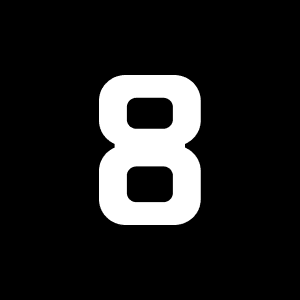Many of our members not only use the Pod to track their sleep and health statistics, but also use other products such as the Oura ring and Whoop strap to track other health metrics. All three of these fitness devices track HRV (Heart Rate Variability), a key indicator of overall health.
Given the nature of all three of these products monitoring your HRV through different means,, there are different methods by which each of these devices collect and track HRV. It’s worth noting that none of these devices are “wrong” or “right” in terms of tracking your HRV. Instead, they can give you complementary insights about your health and recovery.
How the three different products monitor your HRV
The Eight Sleep Pod uses health-grade, piezoelectric pressure sensors in the Active Grid to detect body movement, heart rate, and breathing patterns. These sensors pick up the vibration from heart beats to detect the intervals in between beats in order to provide HRV tracking and insights each morning.
The Oura ring works a bit differently to detect HRV. The Oura ring measures your heart rate by using two infrared LEDs monitors via the arteries on the palm side of your finger. For HRV specifically, the Oura ring calculates it by using rMSSD, an HRV parameter to provide data and insights on Autonomic Nervous System activity, which Eight Sleep and Whoop use, as well.
The Whoop strap is similar to the Pod in that it uses sensor technology. With data points from light sensors that track the flow of blood, Whoop can detect your heart rate. In other words, the Whoop measures your heart rate through your wrist or arm, depending where you place the strap. HRV is then calculated by analyzing the time in between heartbeats.
How to interpret your cross-device HRV
With all these different ways of collecting data and measuring HRV, it is notable that HRV trends give clearer insight into your overall health rather than specific HRV statistics and variations across devices. As a user of one or all these products, you might notice some data points not exactly matching up. This is not necessarily a case of inaccuracy, but more a consequence of when and how HRV data is collected. All three are tracking HRV throughout the night into a single representative value. However, with different methodology, it’s inevitable that you may see some variation if you use multiple products that track your HRV. Therefore, it is most important to track the trends in your HRV in order to see if your HRV is dipping below your normal trend lines. It is also important to be consistent with one device when tracking long term trends. With the Pod, you do not need to remember to charge or put a wearable on every night; the Pod seamlessly tracks your HRV while you sleep.
The importance of trends in HRV monitoring
Ideal HRV varies greatly based on age and gender and is a very personalized metric, so it is best to pay attention to your overall trends in HRV. If your HRV dips below your normal baseline, it might be an indication that you might be getting sick, need more rest to recover, or that another function of your body is being negatively affected (e.g. your immune system, stress response, or other bodily functions). There are multiple ways to increase your HRV if it is too low. Try to get more sleep and rest, lower your alcohol intake, drink more water, and meditate. You can then monitor the effects of these actions on the Eight Sleep Pod to if your HRV trend improves.
On the other hand, a higher HRV trend can indicate optimal recovery and overall health. Higher HRV trends generally mean your body has a higher stress response and greater ability to recover faster. This is usually an indication that you are sleeping consistently, hydrating well, and have a balanced diet.
In sum, it is important to keep track of your HRV trends in order to better understand your body, fitness, and recovery.
The best and easiest way to improve your sleep? The temperature adjusting Eight Sleep Pod 3.





